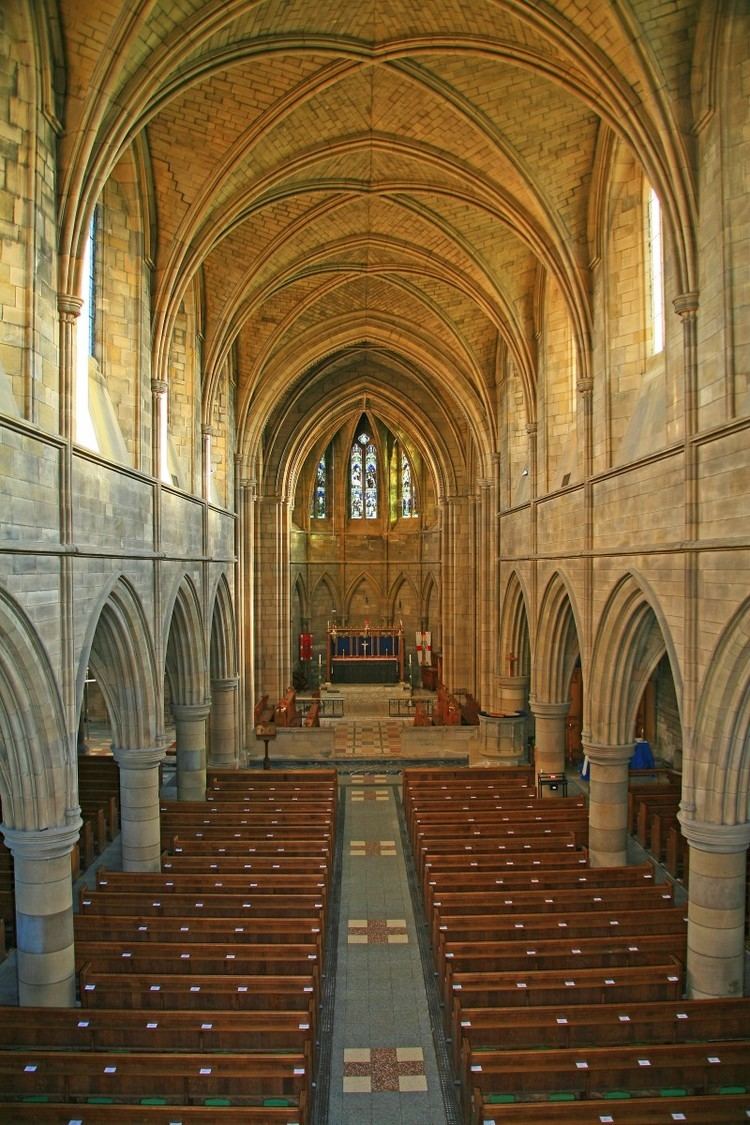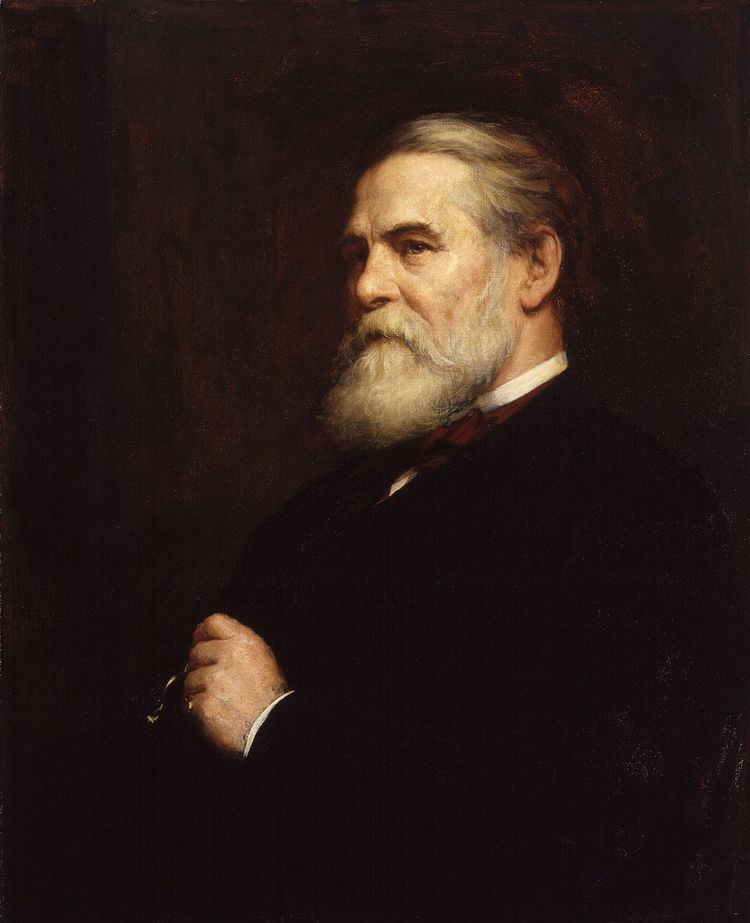Nationality British Role Architect Occupation Architect Parents William Pearson | Children Frank L Pearson Name John Pearson | |
 | ||
Projects St Margaret's, WestminsterBristol Cathedral Structures Truro Cathedral, St Augustine's - Kilburn, Church of St Agnes and St P, Wakefield Cathedral, St Matthew's Church - S Similar People George Gilbert Scott, George Edmund Street, Augustine of Hippo, Martin of Tours | ||
St Agnes & St Pancras Church Liverpool UK - video tour
John Loughborough Pearson (5 July 1817 – 11 December 1897) was a Gothic Revival architect renowned for his work on churches and cathedrals. Pearson revived and practised largely the art of vaulting, and acquired in it a proficiency unrivalled in his generation.
Contents
- St Agnes St Pancras Church Liverpool UK video tour
- Early life and education
- Career
- Some notable buildings
- Some of Pearsons other important works
- References

Early life and education
Pearson was born in Brussels on 5 July 1817. He was the son of William Pearson, etcher, of Durham, and was brought up there. At the age of fourteen he was articled to Ignatius Bonomi, architect, of Durham, whose clergy clientele helped stimulate Pearson's long association with religious architecture, particularly of the Gothic style.
He soon moved to London, where he became a pupil of Philip Hardwick (1792–1870), architect of the Euston Arch and Lincoln's Inn. Pearson lived in central London at 13 Mansfield Street (where a blue plaque commemorates him), and was awarded the RIBA Royal Gold Medal in 1880.
Career
From the erection of his first church at Ellerker, in Yorkshire, in 1843, to that of St Peter's, Vauxhall, in 1864, his buildings are geometrical in manner and exhibit a close adherence to precedent, but elegance of proportion and refinement of detail lift them out of the commonplace of mere imitation. Holy Trinity, Westminster (1848), and St Mary's, Dalton Holme (1858), are notable examples of this phase.
Pearson began his career drawing purely on English medieval prototypes, but increasingly incorporated ideas from abroad: Charles Locke Eastlake described Pearson's Christchurch at Appleton-le-Moors as "modelled on the earliest and severest type of French Gothic, with an admixture of details almost Byzantine in character."
St Peter's, Vauxhall (1864), was his first groined church, and the first of a series of buildings which brought Pearson to the forefront among his contemporaries. In these he applied the Early English style to modern needs and modern economy with unrivalled success. St Augustine's, Kilburn (1871), St John's, Red Lion Square, London (1874), St Alban's, Conybere Street, Birmingham (1880), St Michael's, Croydon (1880), St John's, Norwood (1881), St Stephen's, Bournemouth (1889), and All Saints Church, Hove (1889), are characteristic examples of his mature work.
He was enlisted by Sir Tatton Sykes, 5th Baronet to develop the first of what now are known as "The Sykes churches" near Sledmere. Initially Pearson restored the churches at Garton, Kirkburn, and Bishop Wilton, along with a new one at Hilton.
Pearson is best known for Truro Cathedral (1880), which has a special interest in its apt incorporation of the south aisle of the ancient church. Pearson's conservative spirit fitted him for the repair of ancient buildings, and among cathedrals and other historic buildings placed under his care were Lincoln, Chichester, Peterborough, Bristol and Exeter Cathedrals, St George's Chapel, Windsor, Westminster Hall, and Westminster Abbey, in the surveyorship of which he succeeded Sir George Gilbert Scott. He re-faced the north transept of Westminster Abbey, except for the porches (which are the work of Scott), and also designed the vigorous organ cases. In his handling of ancient buildings he was repeatedly opposed by the anti-restorers of the Society for the Protection of Ancient Buildings (as in the case of the west front of Peterborough Cathedral in 1896), but he generally proved the soundness of his judgment by his executed work. He also did restoration work on smaller churches, including St Edward's Church in Gloucestershire.
Pearson's practice was not confined to church building. Treberfydd (1850), Quar Wood (1858), Lechlade Manor, an Elizabethan house (1873), Westwood House, Sydenham, in the French Renaissance style (1880), the Astor estate offices (1892) upon the Victoria Embankment, London, the remodelling of the interiors of Cliveden House (1893) and No. 18 Carlton House Terrace (1894), with many parsonages, show his aptitude for domestic architecture. In general design he first aimed at form, embracing both proportion and contour; and his work may be recognized by accurate scholarship coupled with harmonious detail. Its keynotes are cautiousness and refinement rather than boldness.
He is buried in the nave of Westminster Abbey, where his grave is marked by the appropriate motto Sustinuit et abstinuit. He was elected an Associate of the Royal Academy in 1874, becoming a full member in 1880. He was also a fellow of the Society of Antiquaries, and a fellow and member of the Council of the Royal Institute of British Architects.
In 1862 Pearson married Jemima Christian, a cousin of his friend Ewan Christian, a Manxman and architect to the Ecclesiastical Commissioners. Their son Frank Loughborough Pearson was born in 1864, but to Pearson's great sorrow Jemima died the following year of typhoid fever. Frank followed in his father's footsteps completing much of his work before embarking on his own original designs.
While Truro Cathedral is considered his UK masterpiece there are many who consider St John's Cathedral in Brisbane, Australia his finest work. St John's was initially designed by Pearson and then by his son Frank following his father's death in 1897. The cathedral was constructed between 1906 and 2009 and is a study in contrast to Truro. While lacking some of the decorative detail found at Truro and having shorter towers, the cathedral also departs from the conventional Early English style Neo-Gothic Pearson used extensively at Truro. St John's employs a broad mix of styles: some early English Gothic (lancet windows and bell shaped capitals in the piers); early French Gothic (the pyramidal spires of the towers, and the internal sexpartite vault of the ceiling, also used at Truro); and Spanish Gothic used extensively in the internal design of the nave and sanctuary. The form of Spanish Gothic used at St John's is based on Barcelona Cathedral. The Barcelona influence can be seen in the nave which has two walls forming double aisles; the inner wall forming the nave arcade which has a wide panel below the triforium to help keep out the subtropical sun. But the Spanish precedent can best been seen in the cathedral's large apsidal sanctuary (wholly different from the conventional English square-end at Truro) whose tall pillars reach from ground floor to the arches immediately below the vault, producing an effect of extraordinary complexity and beauty.
